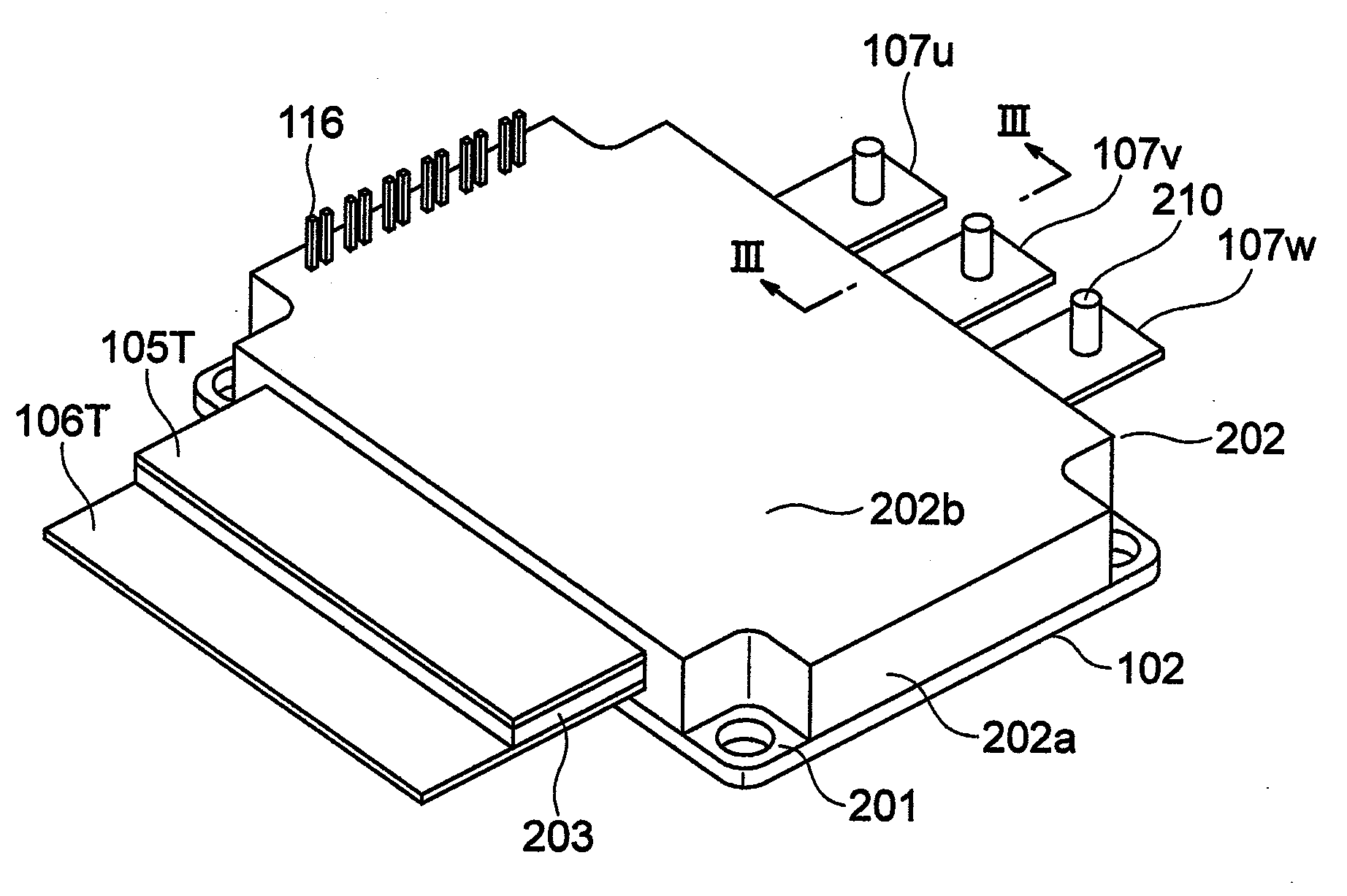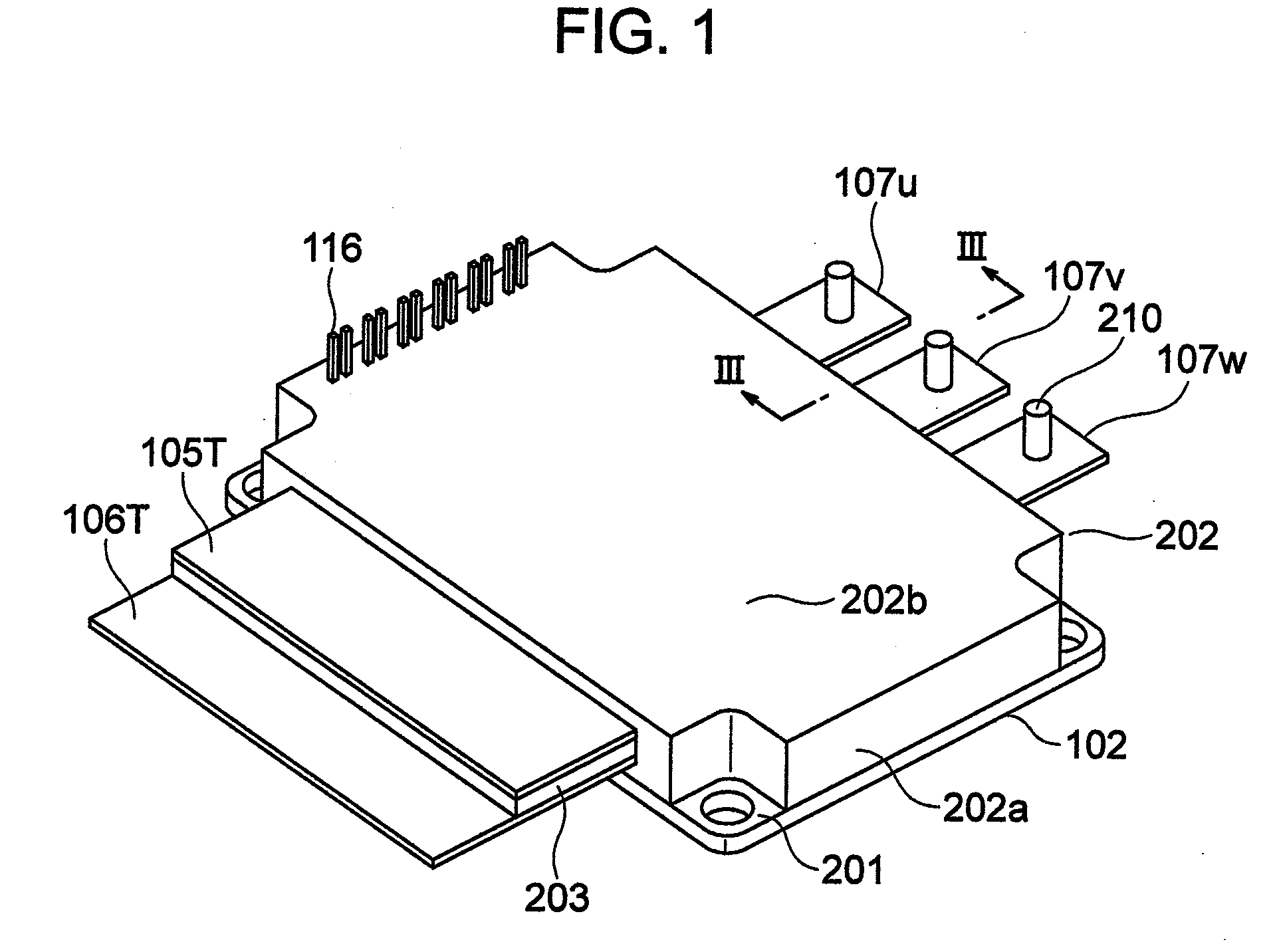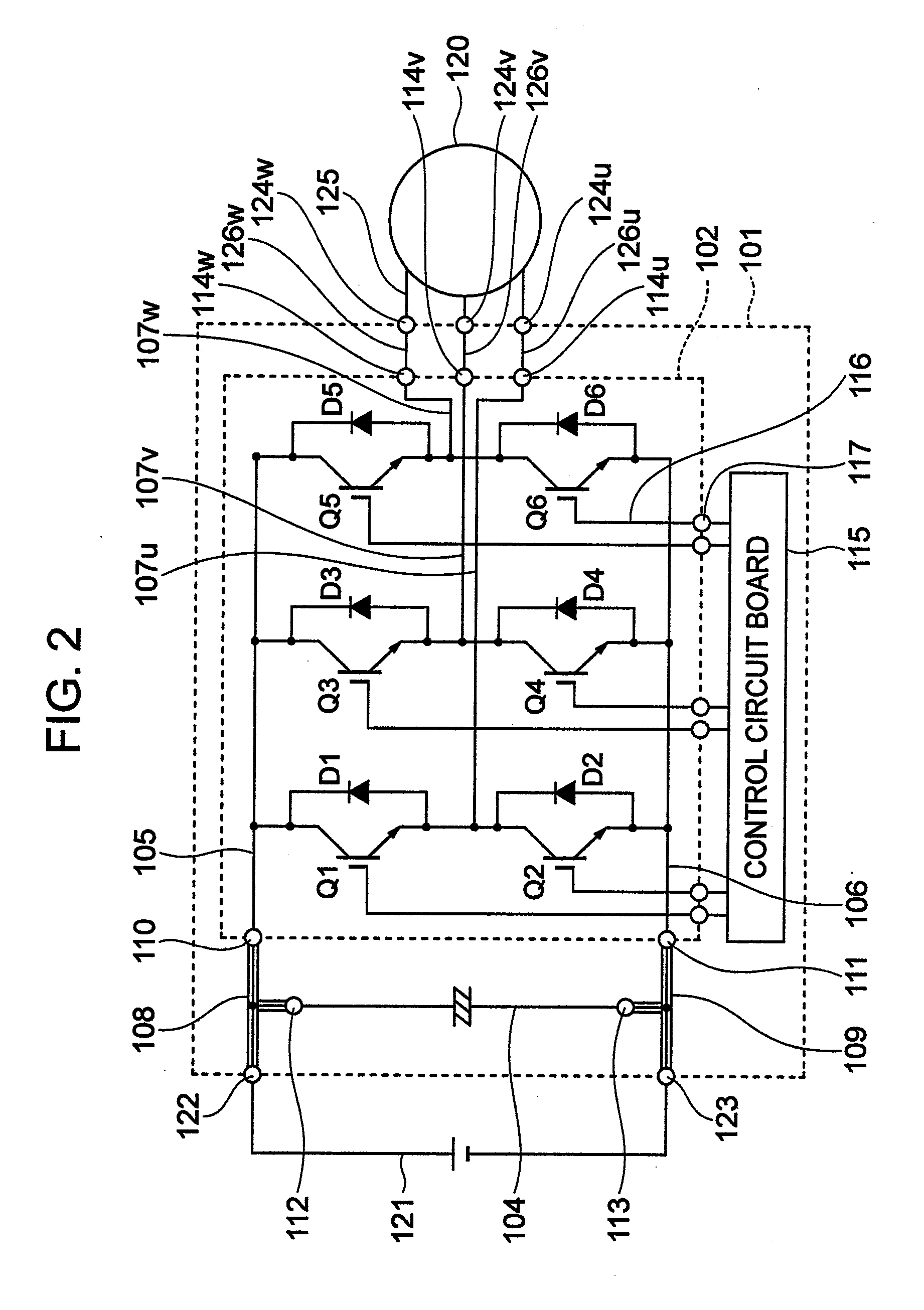Power Converter
a power converter and converter technology, applied in the direction of engine-driven generators, electric devices, transportation and packaging, etc., can solve problems such as confirmation of positioning, and achieve the effects of reducing the production cost and increasing the productivity of the power converter
- Summary
- Abstract
- Description
- Claims
- Application Information
AI Technical Summary
Benefits of technology
Problems solved by technology
Method used
Image
Examples
embodiment 1
[0054]FIG. 2 shows a circuit diagram of a power converter in accordance with an embodiment of the present invention, showing a DC power source 121, a rotary electric machine 120, and a power converter 101, connected to the circuit diagram.
[0055]In FIG. 2, the interior of the power converter 101 is shown by a dotted line frame, and the frame corresponds to a casing (denoted by reference numeral 901 in FIG. 11) of the power converter 101.
[0056]Provided in the interior of the power converter 101 are a smoothing capacitor 104, a power module 102, and a control circuit board 115. A dotted line frame indicative of the power module 102 corresponds to a case (denoted by reference numeral 201, 202 in FIG. 1) of the power module 102.
[0057]The DC power source 121 is located outside of the power converter 101 and a plus terminal of the DC power source 121 is connected to one end of the smoothing capacitor 104 via a connection 122 of the power converter 101 and also connected to a plus side line...
embodiment 2
[0103]FIGS. 7A and 7B show arrangements of a power converter in accordance with another embodiment of the present invention. FIG. 7A is a perspective view of the power module 102 built in the power converter, and FIG. 7B is a perspective view of the power module 102, showing the power module 102 and interconnections between the DC bus bars 108, 109 and the AC conductor 126u, 126v, 126w when the power module 102 is built in the power converter. FIG. 8 shows a cross-sectional view of the power converter taken along a line VIII-VIII in FIG. 7B.
[0104]FIG. 7A corresponds to FIG. 1, and is different from FIG. 1 in that a male screw 601A is embedded in the plus-side main electrode 105T to be projected upwards in the drawing and a male screw 601B is embedded in the minus-side main electrode 106T to be projected upwards in the drawing.
[0105]As in the case of FIG. 1, the male screw 210 is embedded in each of the AC-side main electrodes 107u, 107v and 107w.
[0106]The DC bus bars 108 and 109 co...
embodiment 3
[0115]FIGS. 10A and 10B show arrangements of a power converter in accordance with another embodiment.
[0116]FIG. 10A is a perspective view of the power module 102 when built in the power converter, and FIG. 10B is a perspective view of the power module 102 when built in the power converter, showing a connection arrangement among the power module 102, the DC bus bars 108, and the AC conductors 126u, 126v, 126w.
[0117]FIGS. 10A and 10B correspond to FIGS. 7A and 7B, and are different from FIGS. 7A and 7B by the plus-side main electrode 105T and the minus-side main electrode 106T.
[0118]That is, as shown in FIG. 10A, the plus-side main electrode 105T is arranged not to be overlapped with the minus-side main electrode 106T but to be parallel to each other in a plane parallel to the base 201.
[0119]The above electrode arrangement holds true even for the AC-side main electrodes 107u, 107v, 107w.
[0120]The male screw 601A is embedded in the plus-side main electrode 105T to be projected upward...
PUM
 Login to View More
Login to View More Abstract
Description
Claims
Application Information
 Login to View More
Login to View More - R&D
- Intellectual Property
- Life Sciences
- Materials
- Tech Scout
- Unparalleled Data Quality
- Higher Quality Content
- 60% Fewer Hallucinations
Browse by: Latest US Patents, China's latest patents, Technical Efficacy Thesaurus, Application Domain, Technology Topic, Popular Technical Reports.
© 2025 PatSnap. All rights reserved.Legal|Privacy policy|Modern Slavery Act Transparency Statement|Sitemap|About US| Contact US: help@patsnap.com



